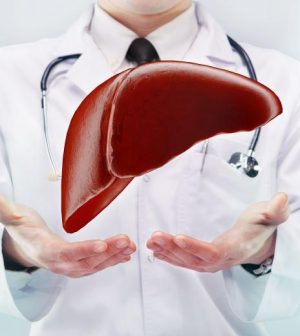- Understanding the Connection Between Anxiety and Depression
- How Daily Prunes Can Influence Cholesterol and Inflammation
- When to Take B12 for Better Absorption and Energy
- Epsom Salts: Health Benefits and Uses
- See What Saffron Can Do for Sleep and Heart Health
- 6 Common Mistakes to Avoid Before Your Physical
- Can Sweating Really Help You Beat a Cold?
- Strengthening Your Relationship: Practical Strategies
- Skip Storing This Everyday Product in the Fridge Door
- Green Tea + B3 Pairing May Boost Brain Health
What Are the Symptoms of Hepatitis C?

Hepatitis C is often missed in the early stages of infection, so you need to know what symptoms might spell trouble.
According to the U.S. Centers for Disease Control and Prevention, hepatitis C infections, which attack the liver, are increasing at a faster rate than a decade ago. While there’s no need for alarm, it’s important to arm yourself with accurate information for protection from infection.
What is hepatitis C?
The hepatitis C virus (HCV) is an infection passed through blood and body fluids. If left untreated, it causes severe liver damage like scarring and liver cancer.
“We call hepatitis C the silent killer because it’s usually discovered only years and years later, without proactive screening, when a person gets symptoms that are signs of significant liver injury,” Dr. Nancy Reau, a Rush University Medical Center hepatologist, explained in an online video.
How is hepatitis C transmitted?
The CDC explains HCV is spread through:
- Shared drug-injection paraphernalia
- Childbirth from an infected mother to the baby
- Health care exposure for professionals who don’t follow blood-borne infection protocols
- Sex with an infected person, more often in men who have sex with men
- Unregulated tattoos and body piercings
- Shared personal items like razors or nail clippers
- Blood transfusions and organ transplants prior to 1992, when supply screening wasn’t in place
What are symptoms of hepatitis C?
There’s no evidence to suggest a difference between hepatitis C symptoms in men versus women.
After exposure, it’s not uncommon for someone infected with HCV to show no symptoms. If symptoms do appear, they can show up one to three months after exposure and last up to three months.
Symptoms of hepatitis C fall into two categories: acute and chronic, according to the Cleveland Clinic.
Acute symptoms:
- Fever
- A body temperature over 100 degrees Fahrenheit
- Fatigue
- Body aches
- Muscle and soft tissue aches and pains, also referred to as myalgia
- Loss of appetite
- Not feeling hungry, having no desire to eat, or food aversion
- In acute hepatitis C, you may also notice symptoms of acute liver disease such as:
- Jaundice, a yellowing of the skin
- Whites of the eyes look yellow, because of the production of too much bilirubin from liver injury or disease
- Abdominal pain
- Right upper abdominal pain — it can be a throbbing or stabbing pain felt just under the ribs
- Nausea and vomiting
- A queasy feeling in your stomach and sweating, extra saliva in your mouth, or the feeling that you will vomit
- Dark-colored urine and/or light-colored stool
- Dark-colored urine from bile entering the urine. Light-colored stool can indicate a decrease in bile production or a bile flow blockage. Both can cause stool to look pale or clay-colored
Chronic symptoms:
Many people develop symptoms of hepatitis C after years of chronic infection causing liver damage or cirrhosis. Approximately 50% of people with acute hepatitis C will develop chronic HCV, according to the CDC, which includes these symptoms:
- Excessive fluid build-up in the tissues, known as edema. It is typically seen in the feet, legs and ankles, but it can occur in any part of your body
- A fluid build-up in the space between the lining of the abdomen and abdominal organs also known as ascites. Over time, it can develop into pain and bloating. Shortness of breath can also occur if there is a large amount of fluid collection
- Pruritis, or itchiness, can happen on one part of the body or all over the body. Excessive scratching can leave redness and scratch marks on the body
- Unexplained weight loss. Ten pounds, or 5 percent of total body weight over 6 to 12 months, is concerning and considered unexplained
- Bleeding or bruising. Production of protein in the liver is necessary for blood clotting. When liver disease is present, protein production slows or stops reducing blood clotting and causing you to bruise or bleed easily, according to the University of California, San Francisco
- Difficulty thinking or remembering, confusion. In severe liver disease, toxins aren’t properly eliminated from the body and can travel to the brain. The result is hepatic encephalopathy, which impacts brain function. There are treatments to remove these toxins and reverse hepatic encephalopathy, but they become less effective with late-stage liver disease
Treatment
Early detection with a simple blood test for hepatitis C is important for treatment and reduction of community spread. According to the CDC, “Current treatments usually involve just 8 to 12 weeks of oral therapy [pills] and cure over 90% with few side effects.”
Remember, left untreated over many years, hepatitis C can be deadly.
Source: HealthDay
Copyright © 2026 HealthDay. All rights reserved.










